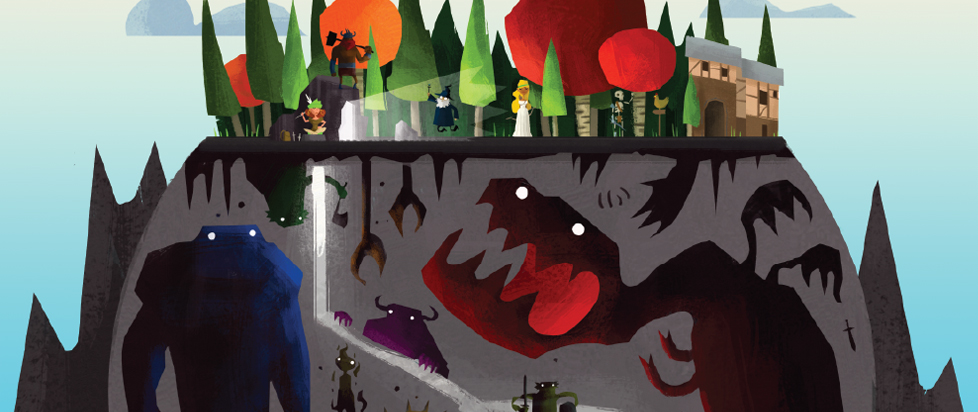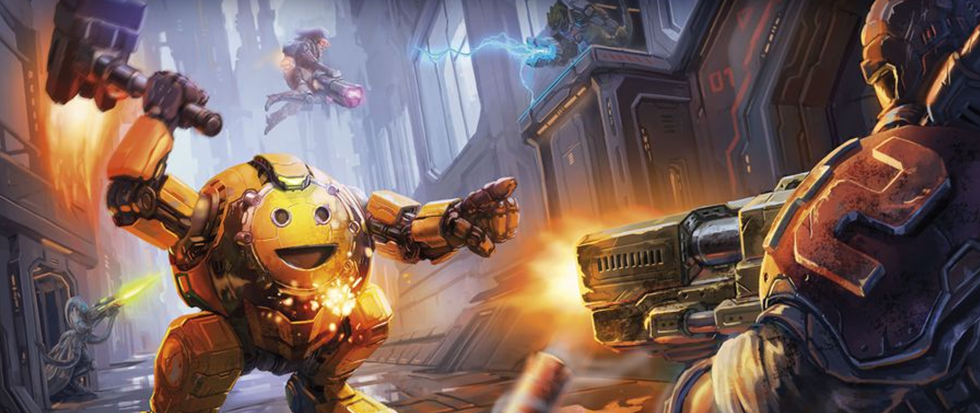
Let’s Get Physical
Game mechanics don’t match up with how the same actions would work in real life most of the time. By necessity, games are abstractions of different concepts found both in the real world and in imaginary ones. What that means in tabletop games is that a dice roll or some other similar mechanic is substituted for whatever the action or concept actually is. In Dungeons and Dragons, you don’t actually swing a sword to see if you hit something. You roll a 20 sided die and add some modifiers to meet or exceed a target number. Short of live action role playing, it’s difficult to actually simulate the act of attacking in a satisfying manner that still makes for a great game. Somehow, though, Catacombs succeeds by riding this premise to its natural conclusion: tactile gameplay without the need to beat up on your friends.
Catacombs is a dungeon crawling game where one person plays as the dungeon master against a party of heroes played by the other players. The goal for the heroes is to take down the Catacomb Lord at the bottom of the dungeon before the dungeon master kills all the heroes. While there are a million different board games with the exact same premise, Catacombs is also a dexterity game. Everything, including heroes, monsters, and obstacles, are represented by discs that move and attack by being flicked, making the entire proceedings feel something like a miniature, remixed version of shuffleboard.
But it’s more exciting than that stodgy game thanks to how intuitive all the mechanics are. Movement is done by flicking a disc, and if you hit an enemy disc with an attack flick, you do damage. Since movement and attacking are both abstracted into flicking, the game lets you know which flicks will do damage and which won’t. Certain abilities will let you launch smaller projectile discs sourced from your hero or monster of choice. Some enemies take normal damage, while others have to be physically knocked off the board. Frozen characters have to have an ice disc placed on top of theirs and can’t move unless someone else knocks it off.
The design of Catacombs works because everything make sense in the physical world, and thus feels good to execute. It also takes away a layer of abstraction and makes you feel like you’re actually battling. Rather than rolling dice to see if you hit or missed, you can literally hit or miss from a flick. And let’s not forget the power of the humble flick. Flicking your disc at an enemy from across the board feels great and pulling off amazing trick shots by ricocheting off of cover to take out several at once make for thrilling moments, as does the inevitable near misses and downright embarrassing shots.
That’s the magic of Catacombs: It doesn’t get in its own way. Because a layer of abstraction is removed, because the mechanics are so intuitive, players are closer to and more involved with the game. There’s suddenly room for more stories of amazing shots and spectacular misses, of how one hero came back from the brink to win the game for their team due to some expert flicking. Sure, you’re not LARPing, but the physicality Catacombs brings to the table makes it feel closer than you might think.





